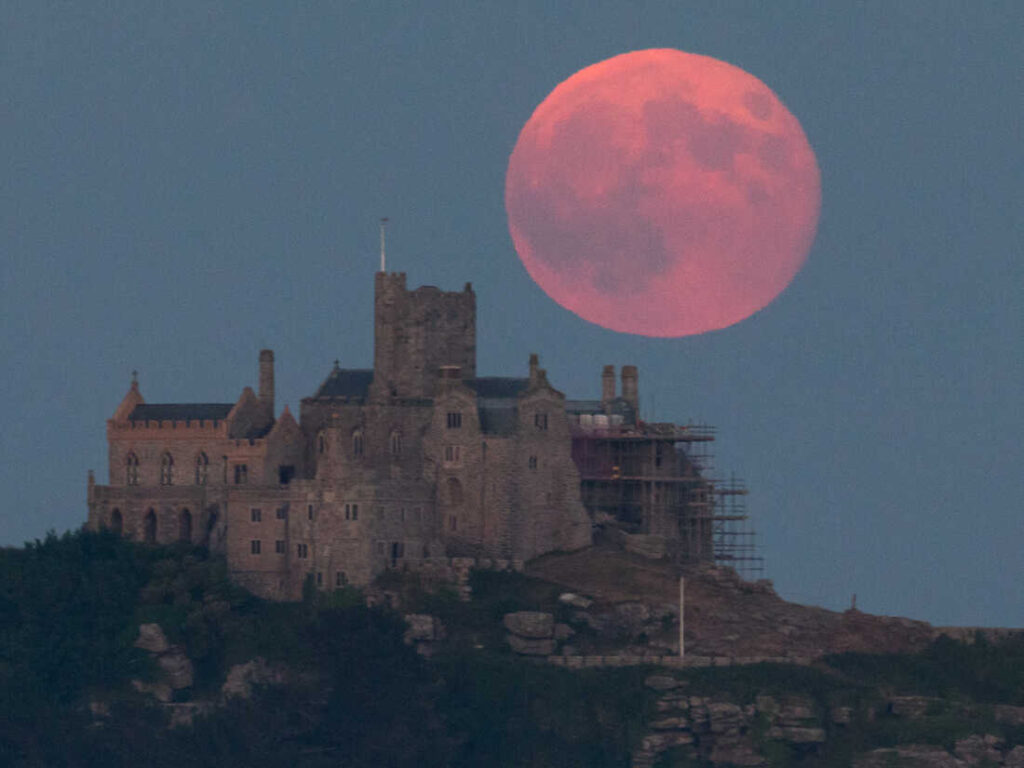Strawberry moon this weekend ?
What significance lies within a name? The essence of a strawberry moon, regardless of alternative nomenclature, would exude its delightful fragrance with unwavering potency. The forthcoming evening of Saturday unveils June’s complete lunar radiance, commonly referred to as the “strawberry moon,” reaching its zenith precisely at 11:42 p.m. ET. Anticipate a grand spectacle, for it is projected to be magnificently colossal, resplendent, and imbued with a golden hue—an exquisite manifestation to commemorate the advent of summer.
As per the esteemed guidance of NASA, this resplendent lunar presence shall grace the heavens throughout the weekend, commencing from the nocturnal hours of Friday and persisting until the dawning of Monday. Should serendipity grace you with proximity to a cloudless firmament during this weekend, divert your gaze towards the heavens, for the luminous star known as Antares shall manifest itself in close proximity to the moon’s right flank. Additionally, both Venus and Mars shall unveil themselves in clear view, as affirmed by NASA. The endearing moniker bestowed upon June’s full moon traces its origins back to the Algonquin tribes, who christened it the “Strawberry moon” to signify the pinnacle of strawberry maturation within the northeastern regions of the United States. Curiously, a multitude of names for full moons bear genesis in the ancient traditions of Native American tribes. For instance, March’s full moon is referred to as the worm moon, while May’s is adorned with the epithet of the flower moon.

Peculiarly, the alternate designations attributed to June’s full moon display a marginal correlation with its physical attributes. The archaic European appellation of the “Honey moon” alludes to the conclusion of June, a time when honey is ripe for the gathering. Similarly, the epithet of the “Rose moon,” another European denomination, establishes a connection with agriculture, paying homage to the resplendent roses that unfurl their petals throughout June. It is worth noting, however, that NASA cites certain sources suggesting that this name also alludes to the moon’s reddish hue as it hangs low in the celestial expanse.
image source : https://www.vancouverisawesome.com,https://www.npr.org/
news source : https://www.npr.org/

